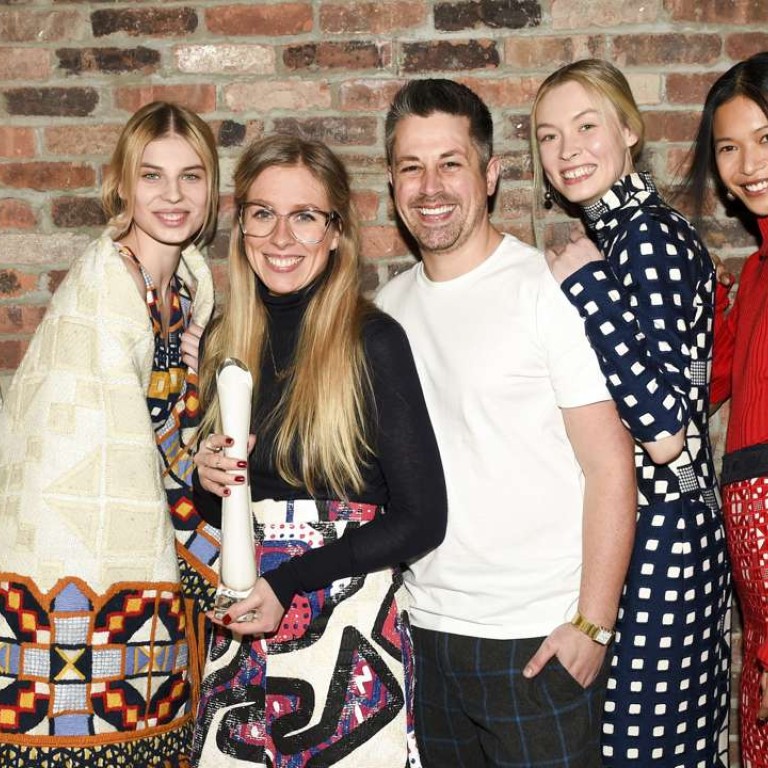
How wool could ride the eco-friendly wave to become fashion’s next ‘It’ fabric
With rising global interest in sustainable lifestyles, Woolmark looks to present wool from its Australian producers as a versatile and modern fibre in premium fashion markets as well as fast-growing areas such as China
The fashion industry is hungry for more eco-friendly and natural fabrics. It’s a hunger the cheap, fast- fashion sector has not been able to satisfy. Now, after years when synthetic fabrics dominated production, high-quality wool is making a serious comeback.
While the food industry has its farm-to-table movement, which promotes serving locally sourced food, there’s no equivalent for fashion – not yet, at least. The conscientious customer, though, is a potential gold mine for producers of wool – which, let’s not forget, is a natural, sustainable, fire-retardant fibre that’s biodegradable, renewable and recyclable.

One company with plenty of chips in the game is The Woolmark Company, which represents Australia’s finest wool producers. It has earned kudos in high-fashion circles through marketing initiatives such as reviving the annual Woolmark Prize, whose early winners in the 1950s included Karl Lagerfeld and Yves Saint Laurent.
Since 2012 the International Woolmark Prize has been presented to some of fashion’s brightest talents, for whom it has served as a launchpad; among these are Belgium’s Christian Wijnants and India’s Rahul Mishra. In 2015 a menswear category was added, with New York label Public School named winner of the inaugural award.
There are regional contests too; Hong Kong hosted the most recent Asian Woolmark Prize finals, where labels Muun and Toton took the top prizes. The company has opened a Wool Resource Centre in Hong Kong forlocal designers.

“We want to show wool as a modern fibre,” says Stuart McCullough, CEO of Australian Wool Innovation and managing director of Woolmark.
Partnerships with fashion labels as varied as Vivienne Westwood, Adidas and Ermenegildo Zegna, have helped that push. Zegna doesn’t just incorporate Australian wool in it designs, though – in 2014 it bought a controlling stake in a Woolmark supplier, Achill Farm – a 2,600-hectare estate in New South Wales that raises 10,000 merino sheep.

“It was the right time, right people,” says company chairman Paolo Zegna of the purchase. “Now we can tell our customers more about the story of our fabrics.”
The fine merino wool produced on farms like this is sought after by many Italian fashion labels.
“Big fashion labels do a have a duty to support the suppliers,” says Zegna. “The success of Italian fashion has been dependent [not only] on creatives like Armani, Versace, Ferré, but the system of support underneath, from the spinners to the growers. It’s really an entire long chain.”
McCullough credits social media for helping take the quest for sustainability – the so-called Lohas [lifestyle of health and sustainability] mentality – mainstream. “It’s been going on with food, and now in apparel too. Everyone looks at labels now,” McCullough says.

It’s estimated that in the US alone, the Lohas consumer market for goods and services focused on health, environment, social justice, personal development and sustainable living is worth US$290 billion a year. It’s a market seen as having huge potential in Asia. It’s a small, but fast-growing segment of the Chinese consumer market, for instance. When momentum builds up, says McCullough, “it’s going to be a big deal.”
China already buys three-quarters of Australian wool exports, making it a key market for Woolmark. South Korea is an increasingly important market.
“In 2009 when other world economies collapsed, China kept a lot of things afloat. They were literally our saviour,” says McCollough.
The company held the 2015 International Woolmark Prize awards ceremony in Beijing, supported some of the smaller exhibitors at the 2016 Shanghai Fashion Week, and has wooed partners from the giant Nanshan Group to fashion brands such as the eco-friendly Icicle, which champions the use of natural fibres.
Now, as China’s economic growth weakens and global consumer spending slows, Woolmark is looking for growth from the sports, technical outerwear and athleisure fashion markets. Performance wool fabrics are nothing new at Zegna, which launched its lightweight, crease-resistant High Performance fabric in the 1980s, but it has continued to innovate. Its couture collection, for instance, uses High Performance Microsphere and specially Cool Effect fabrics.
“Some of the innovations in the Woolmark Prize are technical, even though it’s really a design programme,” says McCullough. “It’s wonderful to see it develop with performance fabrics.”

